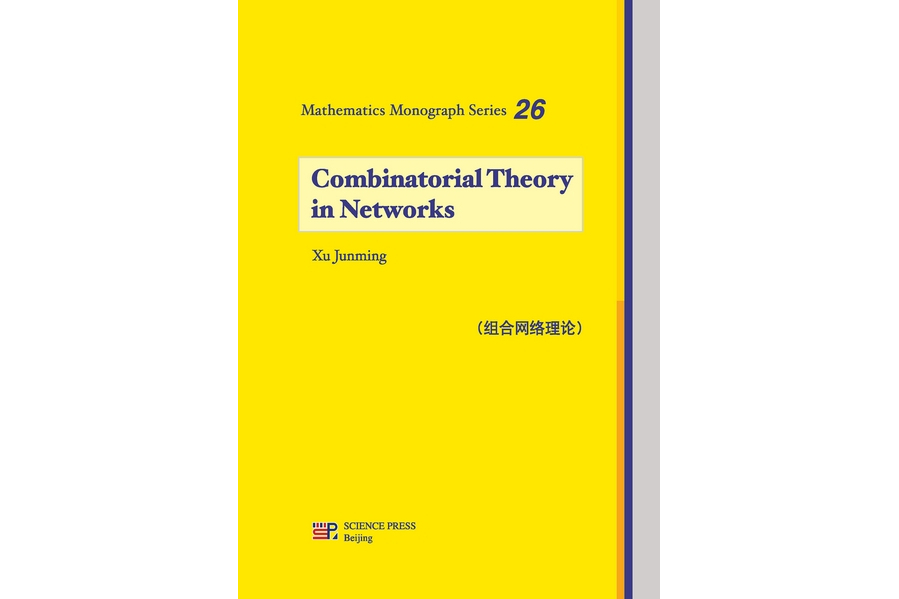內容簡介
該教材主要介紹計算機互連網路拓撲結構的設計和分析中基本理論和方法,旨在為研究生和對計算機互連網路拓撲結構有興趣的理論計算機工作者提供一個入門教材.內容包括網路與圖論的基本概念,網路性能的基本度量;網路設計的基本原則;網路設計的基本方法(如線圖,代數和笛卡爾方法);某些著名的網路拓撲結構(如超立方體網路,deBruijn網路,Kautz網路,循環網路,格網路,金字塔網路,立方連通網路,蝶型網路等等)和它們的基本結構性質以及各種推廣;容錯網路分析中的基本度量參數(如傳輸延遲,容錯直徑,寬直徑,限制直徑,控制數)的研究進展和最新研究結果。
圖書目錄
Preface
Part I Networks and Graphs
Chapter 1 Fundamentals of Networks and Graphs
1.1 Graphs and Networks
1.2 Basic Concepts and Notations
1.3 Trees and Planar Graphs
1.4 Transmission Delay and Diameter
1.5 Fault Tolerance and Connectivity
1.6 Embedding and Routings
1.7 Basic Principles of Network Design
Exercises
Chapter 2 Symmetry of Graphs or Networks
2.1 Fundamentals on Groups
2.2 Vertex-Transitive Graphs
2.3 Edge-Transitive Graphs
2.4 Atoms of Graphs
2.5 Connectivity of Transitive Graphs
Exercises
Part II Bssic Methods of Network Designs
Chapter 3 Line Graphical Methods
3.1 Line Graphs and Basic Properties
3.2 Basic Properties of Line Digraphs
3.3 Iterated Line Graphs
3.4 Connectivity of Line Graphs
Exercises
Chapter 4 Cayley Methods
4.1 Cayley Graphs
4.2 Transitivity of Cayley Graphs
4.3 Atoms and Connectivity of Cayley Graphs
4.4 Vertex-Transitive Graphs with Prime Order
Exercises
Chapter 5 Cartesian Product Methods
5.1 Cartesian Product of Graphs
5.2 Diameter and Connectivity
5.3 Other Properties of Cartesian Products
5.4 Generalized Cartesian Products
Exercises
Chapter 6 Basic Problems in Optimal Designs
6.1 Undirected (d,k)-Graph Problems
6.2 Directed (d,k)-Graph Problems
6.3 Relations between Diameter and Connectivity
Exercises
Part III Well-Known Topologies of Networks
Chapter 7 Hypercube Networks
7.1 Definitions and Basic Properties
7.2 Gray Codes and Cycles
7.3 Lengths of Paths
7.4 Embedding Problems
7.5 Generalized Hypercubes
7.6 Some Variations of Hypercubes
Exercises
Chapter 8 De Bruijn Networks
8.1 Definitions and Basic Properties
8.2 Uniqueness of Shortest Paths
8.3 Generalized de Bruijn Digraphs
8.4 Comparison with Hypercubes
Exercises
Chapter 9 Kautz Networks
9.1 Definitions and Basic Properties
9.2 Generalized Kautz Digraphs
9.3 Connectivity of Generalized Kautz Digraphs
Exercises
Chapter 10 Double Loop Networks
10.1 Double Loop Networks
10.2 L-Tiles in the Plane
10.3 L-Tiles and Double Loop Networks
10.4 Design of Optimal Double Loop Networks
10.5 Basic Properties of Circulant Networks
Exercises
Chapter 11 Topologies of Other Networks
11.1 Mesh Networks and Grid Networks
11.2 Pyramid Networks
11.3 Cube-Connected Cycles
11.4 Butterfly Networks
11.5 Benes Networks
11.6 Networks
11.7 Shuffle-Exchange Networks
Exercises
Part IV Fault-Tolerant Analysis of Networks
Chapter 12 Routings in Networks
12.1 Forwarding Index of Routing
12.2 Edge-Forwarding Index of Routing
12.3 Forwarding Indices of Some Graphs
12.4 Delay of Fault-Tolerant Routing
Exercises
Chapter 13 Fault-Tolerant Diameters in Networks
13.1 Diameters of Altered Graphs
13.2 Edge Fault-Tolerant Diameters
13.3 Relations between Two Diameters
13.4 Vertex Fault-Tolerant Diameters
13.5 Fault-Tolerant Diameter of Product Graphs
13.6 Fault-Tolerant Diameters of Some Networks
Exercises
Chapter 14 Menger-Type Problems in Parallel Systems
14.1 Menger-Type Problems
14.2 Bounded Menger Number and Connectivity
14.3 Bounded Edge-Connectivity
14.4 Rabin Numbers of Networks
Exercises
Chapter 15 Wide-Diameters of Networks
15.1 Wide-Diameter and Basic Results
15.2 Wide-Diameter of Regular Graphs
15.3 Wide-Diameter of Cartesian Products
15.4 Wide-Diameter and Independence Number
15.5 Wide-Diameter and Fault-Tolerant Diameter
15.6 Wide-Diameters of Some Networks
Exercises
Chapter 16 Generalized Independence and Domination Numbers
16.1 Generalized Independence Numbers
16.2 Generalized Domination Numbers
16.3 Distance Independence and Domination
Exercises
Chapter 17 Restricted Fault-Tolerance of Networks
17.1 Restricted Connectivity and Diameter
17.2 Restricted Edge-Connectivity
17.3 Restricted Edge-Atoms
17.4 Results on Transitive Graphs
17.5 Super Connectivity of Networks
17.6 Super Edge-Connectivity of Networks
17.7 Super Connectivity of Line Graphs
17.8 Connectivity Restricted by Degree-Conditions
17.9 Connectivity Restricted by Order-Conditions
17.10 Restricted Connectivity of Some Networks
Part Ⅱ Basic Methods of Network Designs
Part Ⅲ Well-Known Topologies of Networks
Part Ⅳ Fault-Tolerant Analysis of Networks
Bibliography
A List of Notations
Index

